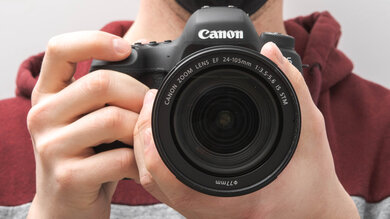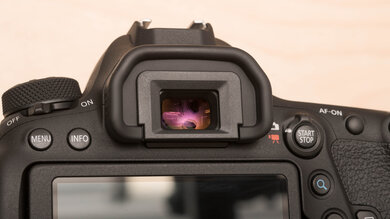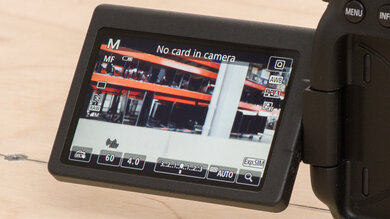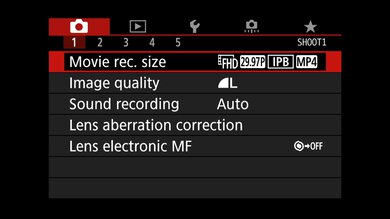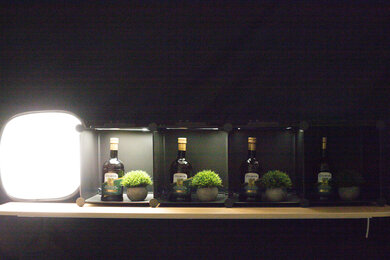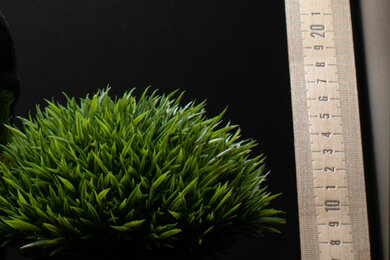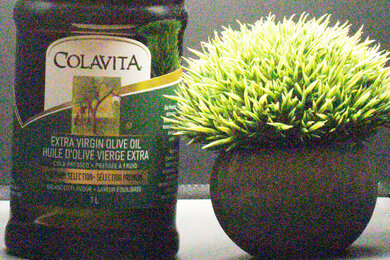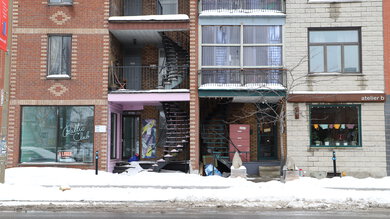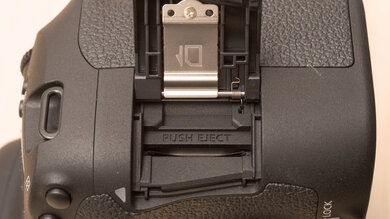The Canon EOS 6D Mark II is a full-frame DSLR camera. It's well-built, comfortable to use, has an intuitive menu system, and offers an excellent overall battery life. It also delivers excellent image quality, with little apparent noise or graininess present in images and an okay dynamic range. Unfortunately, its video qualities are somewhat limited, with no support for 4k recording and mediocre video quality in FHD. It's also big and bulky, making it a challenge to carry around for long periods.
Our Verdict
The Canon 6D Mark II is decent for travel photography. Images are sharp and mostly clear of visual noise when shooting at high ISO levels in low light. You can use its long minimum shutter speed to take complex, long-exposure shots. It also has a fantastic battery life for photos, depending on how you use it. Unfortunately, its autofocus performance is mediocre, especially with tracking faces, and its bulky design can make it a hassle to carry around.
- Excellent overall image quality.
- Good build quality.
- Great ergonomics.
- Slow maximum burst rate.
- Bulky design with heavy kit lens.
- Mediocre autofocus performance in photography.
The Canon 6D Mark II is good for landscape photography. Images are sharp, color-accurate, and mostly free of visual noise even in low light. That said, its dynamic range is somewhat limited, so you may lose some detail in high-contrast landscape shots. Thankfully, the camera is quite sturdily built, with an aluminum and polycarbonate construction that's rated as being weather-sealed. It's comfortable to use and has a bright screen that you can easily read under direct sunlight. However, its bulky size and weight can be a bit of a hindrance on long hikes to remote shooting locations.
- Excellent overall image quality.
- Good build quality.
- Bright, sharp, fully-articulated screen.
- Great ergonomics.
- Bulky design with heavy kit lens.
- Limited dynamic range.
The Canon 6D Mark II is a satisfactory option for sports and wildlife photography. Its max burst rate isn't especially quick, making it harder to capture distinct images of subjects that can move across the frame quickly, though its rapid buffer-clearing time means that continuous bursts don't lead to long interruptions. Image quality is excellent overall. Unfortunately, its autofocus system can occasionally struggle with tracking and maintaining focus on moving subjects.
- Excellent overall image quality.
- Good build quality.
- Great ergonomics.
- Slow maximum burst rate.
- Bulky design with heavy kit lens.
- Mediocre autofocus performance in photography.
The Canon 6D Mark II captures decent RAW image quality. It has good noise handling overall and captures images with a great level of fine detail, giving you some leeway to crop in without losing too much clarity. That said, its dynamic range is quite limited, especially compared to newer full-frame sensors.
- Good noise handling.
- Limited dynamic range.
The Canon 6D Mark II is a poor fit for vlogging. It's bulky and has a heavy kit lens, making it difficult to carry around for extended recording sessions. It also can't record 4k footage, and its video quality in FHD isn't especially sharp. Its stabilization performance is also disappointing, leading to shaky handheld recordings. That said, its autofocus system does an amazing job of maintaining and tracking. Its fully articulated screen makes it easy to see yourself when the camera is held in a selfie position.
- Excellent autofocus performance in FHD recording.
- Bright, sharp, fully-articulated screen.
- Bulky design with heavy kit lens.
- Mediocre video quality in FHD.
- Sub-par video stabilization capability.
The Canon 6D Mark II isn't meant for studio video work. It can't record in 4k, and its video quality in FHD is mediocre. It also lacks a clean HDMI output to use an external recorder free of any overlays or a headphone jack to let you monitor audio more precisely. However, its autofocus system is consistent, reliable, and quick while recording, and its menu system is easy to understand.
- Excellent autofocus performance in FHD recording.
- Easy-to-use menu interface.
- Mediocre video quality in FHD.
- Limited frame rate selection.
- No headphone jack or clean HDMI output.
The Canon 6D Mark II isn't designed for action video. It's much too big to be mounted to a chest or helmet rig and can't record at very high frame rates in FHD for generating smooth slow-motion video. Its video stabilization performance is also middling, which can give recorded footage a somewhat shaky quality. Thankfully, it feels well-built.
- Good build quality.
- Bulky design with heavy kit lens.
- Mediocre video quality in FHD.
- Limited frame rate selection.
- Sub-par video stabilization capability.
Changelog
- Updated Jul 18, 2024: We corrected an error with the Lens Mount of this camera from 'EF-S Mount' to 'EF Mount.'
- Updated Jan 29, 2024: Added text to the 'Raw Photo Performance' verdict box and updated existing verdict boxes for clarity and accuracy.
- Updated Jan 29, 2024: Converted to Test Bench 0.12.1.
- Updated Dec 15, 2022: Converted to Test Bench 0.12.
Check Price
Differences Between Sizes And Variants
The Canon 6D Mark II is only available in one color variant: 'Black', and you can see its label here. We purchased it in conjunction with the Canon EF 24-105mm f/3.5-5.6 IS STM lens, but it can be purchased with other EF-mount lenses, including the Canon EF 24-105mm USM lens. However, we haven't tested it in any other configuration. It can also be purchased without a lens at all.
Let us know in the discussions if you come across a different variant, and we'll update our review.
Popular Camera Comparisons
The Canon EOS 5D Mark IV is better overall than the Canon EOS 6D Mark II. Both are excellent DSLRs with full-frame sensors, though the 5D Mark IV's sensor has a slightly higher resolution. The 5D is aimed more at professionals, with a bulkier, slightly sturdier build and dual memory card slots, a faster max burst rate, and 4k video capability. The 6D Mark II still offers great image quality and may offer more bang for your buck if you don't need features like 4k video or prefer a fully articulated screen.
The Canon EOS 6D Mark II and the Canon EOS 90D are both great DSLRs but have different-sized sensors. The 6D Mark II is an entry-level pro camera with a full-frame sensor, while the 90D is a mid-range model with an APS-C sensor. Depending on your needs, one may suit you better than the other. If you need full-frame image quality and don't need extras like 4k video capability, go with the 6D Mark II. On the other hand, the 90D is better suited to faster subjects like sports and wildlife, thanks to its faster burst rate, more effective autofocus system, and smaller, higher-resolution sensor.
The Canon EOS R8 is better overall than the Canon EOS 6D Mark II, but they're different camera types with different advantages. The R8 is more cheaply constructed and has a significantly worse battery life, but it's more well-rounded, with better video features and a more effective autofocus system, as well as being more portable.
In most cases, the Canon EOS R6 outperforms the Canon EOS 6D Mark II, but it's also a higher-end and, therefore, more expensive camera. Because it's a newer, mirrorless model, it offers advantages in areas like autofocus tracking performance, video features, and burst shooting. It also feels better built and features in-body image stabilization and dual SD card slots. That said, the 6D Mark II has a much longer battery life, and it could be a good option for those looking for a cheaper entryway into full-frame photography.
Test Results

- Hand grip is quite large
- Plenty of room for a wide variety of hand sizes, so fingers shouldn't get pinched between the body and lens
- Hand grip has a textured surface that provides a secure hold
- Dedicated controls for shutter speed, aperture, and ISO
- Weight is unevenly distributed toward the front of the camera due to its heavy kit lens





